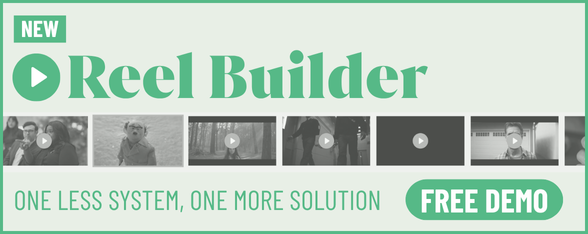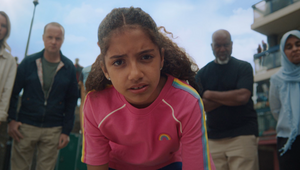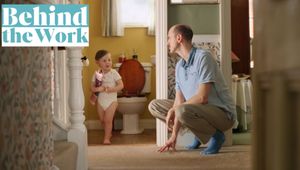
One Year of faith: Lessons from VCCP’s Gen AI Agency

In May 2023, UK creative agency VCCP announced the launch of an AI creative agency called faith. It would serve as the Group’s generative AI creative shop, producing work for new and existing clients centred on the most talked-about new technology for many years.
Working alongside VCCP’s seven international offices to service the agency’s worldwide roster of clients, it launched with a collective of 14 practitioners made up of creatives, technologists, prompt engineers, strategists, data analysts and makers.
Since then, faith has gone far beyond talking about and experimenting with gen AI; it has developed tangible products with clear gen-AI components to them that have run and lived in the world for VCCP’s clients.
By March 2024, faith had launched new AI-enabled tools for O2. ‘The Bubl Generator’ creates custom imagery of O2’s brand character Bubl based on client prompts, so it can be used in channels where cost or time constraints previously limited its use. The second gen-AI tool, ‘The Copy Checker’, focuses on the tonal consistency of the brand’s written marketing communications.
Then this summer Cadbury launched a gen-AI powered tool through VCCP sister agency Bernadette, named ‘My Cadbury Era’, which places users in classic Cadbury posters to celebrate its 200 year heritage with a new campaign activation.
The agency even produced a whole anime-style brand film for itself – ‘finding faith’. And that’s without mentioning the numerous ways faith has slotted gen-AI processes into early concepting stages for VCCP’s clients.
To reflect on what the agency has learned in its first year, LBB’s Alex Reeves caught up with Alex Dalman, VCCP's head of social and innovation and managing partner of faith.
LBB> How did the idea to start faith begin? And why was the model the right one, as opposed to weaving AI expertise through the rest of VCCP more generally?
Alex> faith began with a simple but audacious question: “Could we use gen AI to start an agency in a day… go!?” And so it was formed. A team of technology and innovation enthusiasts from across all of VCCP was assembled from creative, data, strategy and production. We then used gen AI as much as possible in the process of forming the faith brand (it was great for the visuals, but not so great for the name – so that was human created). Finally, we set out with a clear mission to prove or disprove how much you needed humans in the creative process with these new tools in town.
We birthed faith in a time of mass fear and criticism of generative AI during the global freak out which followed the launch of ChatGPT to the world. ‘Creativity is dead!’, the industry proclaimed. ‘Would there ever be an original creative thought again?’, they cried. But we saw past the naysaying and launched with a clear point of view: “We have faith that AI, used responsibly, is an accelerator of human creativity and imagination.” In other words, things that weren’t possible before, due to time or budget constraints, or technical skill and knowledge, might actually be possible with the right mindset and approach. And it was really well received, more than we could have predicted. A year on, it is satisfying to look back and see how much of the industry is now talking this language too.

LBB> What were the early questions that you needed to answer and what were the big breakthroughs when you realised how gen AI can enhance the creative process?
Alex> The early days were a lot of fun and some of my favourite experiences I have had in adland – part apprehension, part excitement, part ‘where the heck is this all going?’ Playing in the grey space can be both exhilarating and absolutely terrifying! Some early questions included: “So now we have launched with our mission, how are we actually going to prove it?” “What are we going to make?” “Is any of this legal?” “What will our clients think?” “How are we going to charge for this?” But we ploughed on with our mission, taking one day at a time as things were changing daily – so much so that we actually only did a business plan by quarter for the key things that we wanted to achieve. Planning any further ahead was fairly pointless at the time.
Some of the biggest breakthroughs were firstly realising how amazing gen AI was for concepting ideas and being that extra firepower for creatives, in order to help them sell their ideas. Some of our biggest and best ads of the last year started life as Midjourney scamps – The Virgin Media ‘Goat Glider’ and ‘Walrus Whizzer’ ads, The Co-op ‘Owned By You. Right By You’ receipt ad and the easyJet ‘Get Out There’ art figure ads. But then came the kicker, can we take concepting into actual creating ads – would the quality be good enough, could we control the chaos, could the output be the best it had to be? The answer became: “Yes, but…” Yes, but the training data needed to be up to scratch. Yes, but the clients’ legal teams needed to be comfortable with the risks. Yes, but it still takes human time and creative vision to get good results. As demonstrated in our sister agency Bernadette’s ‘My Cadbury Era’ campaign and through our O2 Bubl Generator tool – both of which have proven it is possible to get great results with gen AI, with a bit of hard graft.
The final moment of realisation was when the penny dropped that the unhelpful industry narrative of gen AI being free, or that it will save you a lot of money in your marketing plans, was going to be super hard to rebut. Yes there are obvious efficiencies to be made, but to get to those efficiencies you are going to first need to sort out your brand data (at a cost) and secondly you are going to need to train AI on that data (which has both business and environmental costs). So we quickly started talking about a new equation that put creative effectiveness over (just) efficiency. If you can make more assets that expand the brand world to channels that are often unloved in time and budget like social, internal comms and CRM, then surely your comms overall will be more effective, and in turn drive greater returns. We are halfway through the journey to prove this. It’s looking very encouraging, but we also want to ensure we have enough time and the volume of use cases to make a credible and robust comparison.
LBB> Let's talk about the process of 'finding faith'. What did that represent as a moment in the agency's development?
Alex> About half way through this year, we had a bit of a sticking point. Yes, we had started to master generative imagery, generative copy, generative chatbots and generative audio to a degree, but there was one medium that kept coming up in conversations internally and externally. Why can’t we use gen AI to make generative video?
Video is of course king in today’s marketing mix as the basis of most social media campaigns, but is often the biggest bone of contention in marketing teams today, usually being expensive and hard to get right for the audience at the breakneck speed of the internet. So it was no wonder it kept rearing its head as a question. That’s when we decided to do ‘finding faith’ - an internal experiment to see if we as a team could master a two-minute anime-style film, using as many gen AI techniques as possible, to see just how far we could push the tools and get a decent result.
We specifically chose our own brand world to work with to give us the freedom to experiment both creatively and legally, and we chose a style that no one is an expert in – no one in the building is an anime creator so we wanted to see what was possible. Watch the making of here:
The question we always get asked: “So, was it cheaper and quicker to make?” The short answer is: “Probably not” compared to a normal film in agency-land (in terms of people hours), but on the flipside could this have been achieved at the fraction of the cost with a team of non-experts in anime before? Also: “Probably not”. The point is, we accelerated our creative and production teams, beyond their realms of creativity more than before, and that is the important thing here.
LBB> How do you work to assess the usefulness of new gen AI tools when so many are constantly emerging?
Alex> Experimentation became a core part of the faith teams’ remit, without that, we just wouldn’t be able to exist or be in any way useful to our fellow VCCPers or clients. It’s also the thing that often gets replaced by the urgent tasks, but we make sure the team has time dedicated to this. In our weekly team meeting, there is a section wholly focussed on what new tools have come out, all driven by a team who are naturally curious about this space, and this isn’t something you can force. Alongside this curious, creative nature, we have a very supportive and knowledgeable legal team who work with us hand in hand to understand the potential risks in the tools so that we have the full picture of what we can and can’t do currently with them. Without this valuable insight and also the positive nature of the legal team, we wouldn’t be very far along in our faith journey at all.

LBB> What is it that's slowing down the adoption of gen AI in agencies? Are there legal issues that need to be resolved before it's being used widely?
Alex> There are a few things slowing down the adoption of these tools. Yes, legal is a big one, and is still very much a grey area. Companies need to decide their own stance on the legal risk they are willing to take as per any other hype or technology cycle. But, I would say that isn’t even the biggest issue – which might come as a surprise. The biggest one for me is the training data needed to train AIs for your specific brand – this highlights two big questions for brands: Where is your brand data? And is it good/unique enough?
Gen AI is really shining a light on the need to tighten up brand worlds and marketing practices. Are those TOV guidelines we made 10 years ago really the best we can be? Can we scrape our own website for copy to train an AI and is it good enough? What is our distinctive visual style and has it been consistent for a sufficient period of time in order to have enough training data?
The other barrier in the adoption of gen AI is where brands heavily rely on humans in their communications - this is still quite tough when it comes to gen AI. Brands who use illustration, CGI and specific styles have been quicker to adopt for sure, but for those who feature people, it is not so easy or even often morally okay for them to do so – which is the case for a huge number of brands.
LBB> What are the most useful applications that you're using gen AI for with clients?
Alex> The more weird and unobvious use cases are where we are finding the best applications for gen AI. If a brand has a wacky style then gen AI is their friend, as you can play into the weirdness of the output. And on the other end of the spectrum, we have found brands with a distinctive and consistent visual device are also perfect for gen AI. It’s the brands in the middle, with a limited brand world who struggle to make it work for them. My advice though to get started, is to find one use case for your brand – just get going and test it, and accept the test might also fail. One year on with faith, one thing has been clear, just take that leap of faith and you will learn and discover more than if you don’t take the leap.















